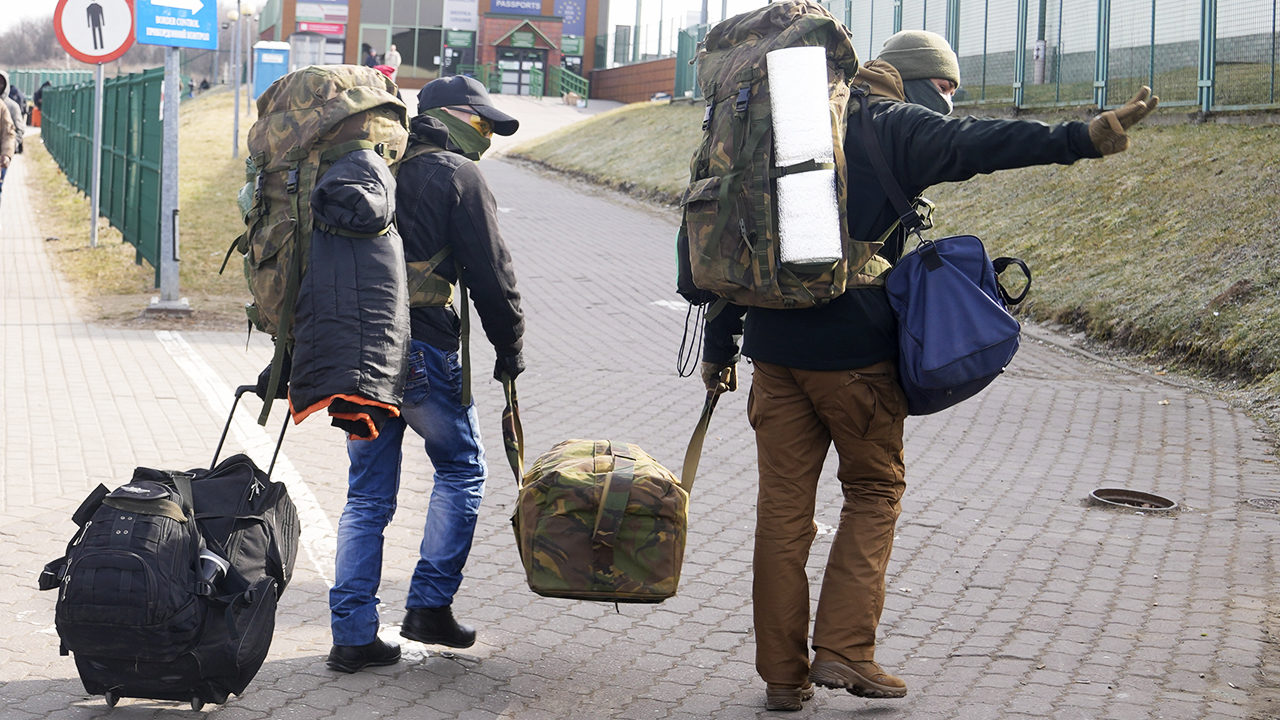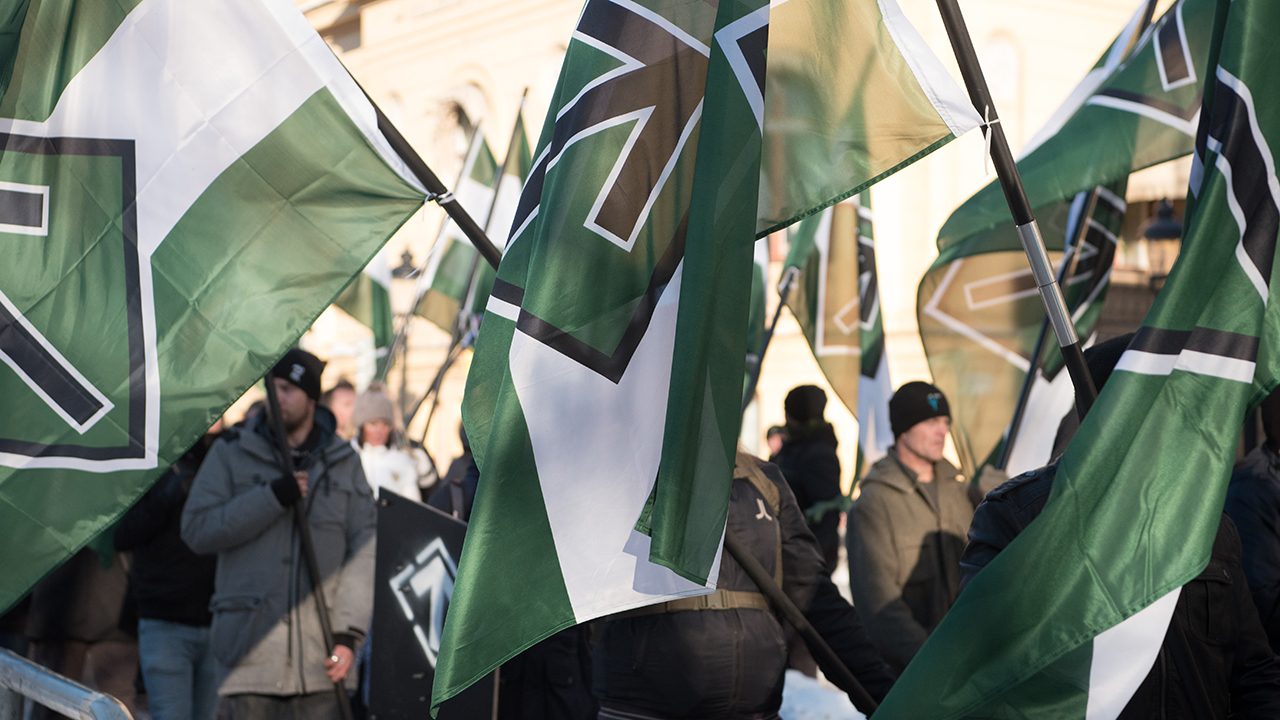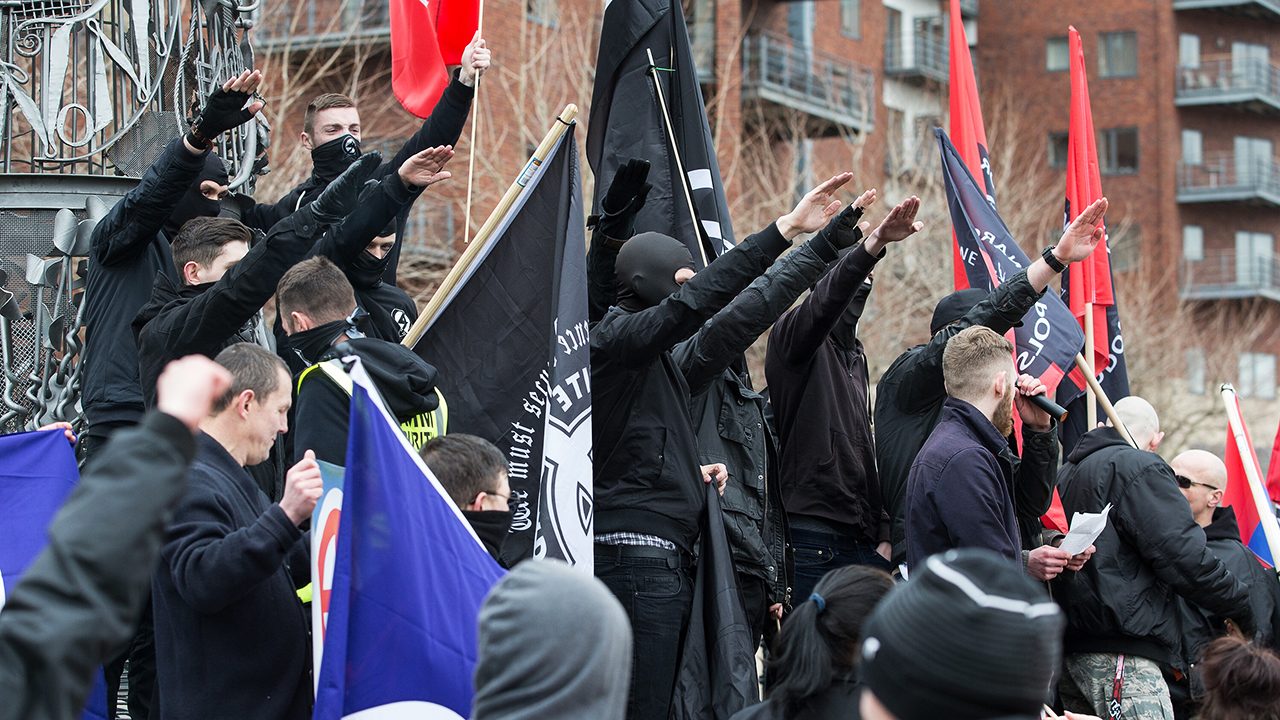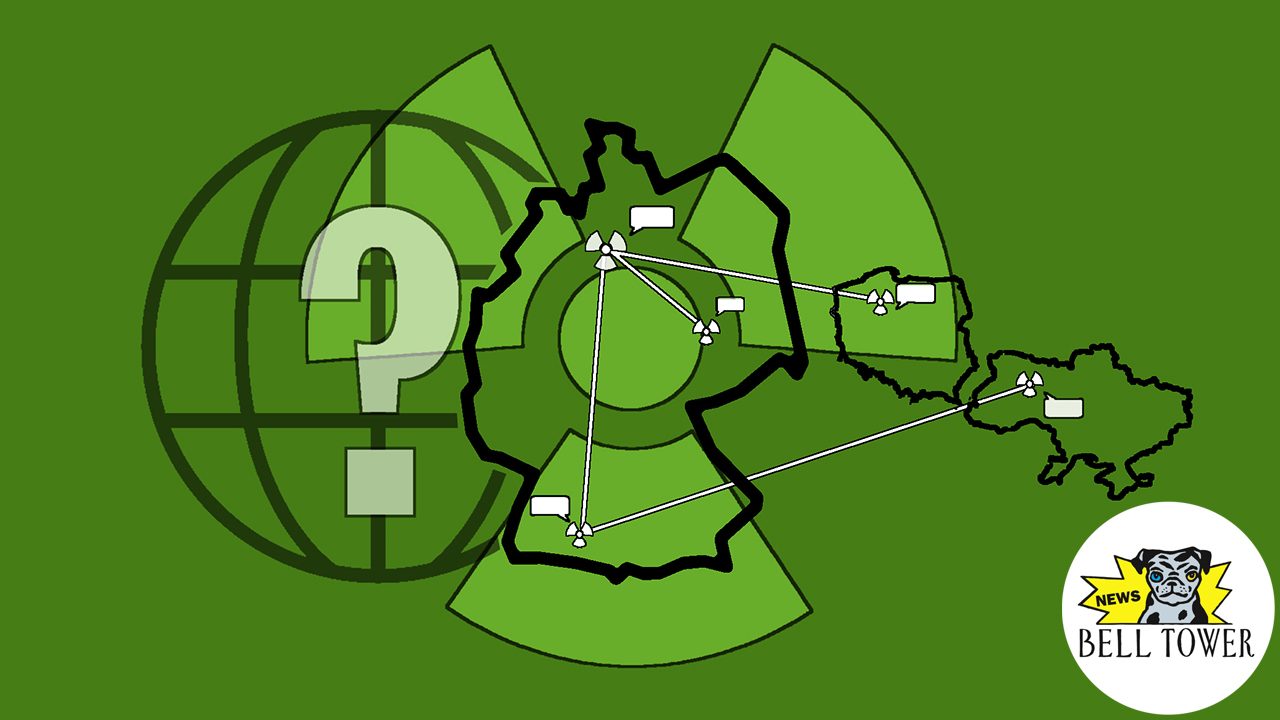
This interview is also available in German.
Belltower.News: Since 2014, foreign fighters have been on both sides of the front of Russia’s war in Ukraine. Is this just war tourism to gain combat experience or are they ideologically driven?
Kacper Rekawek: I think it’s a bit of both. Back in 2014, some foreign fighters felt they had a chance to do things abroad which they couldn’t do at home. But of course, if you’re a law-abiding democrat, you don’t usually need a foreign war to do the things you really want to do. With more radical world-views, that’s different. They want the adrenaline, to break things. And when the right moment comes, they might answer the call to join the war.
How many foreign fighters have joined the war?
The biggest group fighting in this war is still the Russians: tens of thousands of them have fought since 2014 on the pro-Russian separatist side, as genuine volunteer foreign fighters or state-organised fighters alongside separatist groups in Donbas. They were mobilised before February 2022 as a “deniable group” for the Russians. The second category is western fighters who gravitated to both sides of the conflict. Around 600-700 of them on each side actually put on a uniform and held a gun. I’m saying this, because especially on the Russian side, they didn’t get to do much fighting.
Why not?
The Russians decided that they would not make a difference on the battlefield, so they were paraded in front of journalists and observers as propaganda, as “defenders” of traditional, orthodox, anti-American Russia against the horrible, transatlantic Hollywood system of the West. And some of them were really just businessmen, who wanted a new life in Donetsk. Some opened bakeries or furniture shops.
The ideology of those fighting often seems murky at best. This is perhaps best exemplified by the nationalist-Bolshevik French foreign fighters who joined pro-Russia separatist forces in Donbas.
You even see actual neo-Nazis fighting alongside the far left against Ukraine. They’re somehow friends. When I asked some fighters about this, the answer I received was illuminating. They said I talk too much about politics, it’s all about fighting the enemy. And that enemy number one is the United States of America.
The far right is also fighting on both sides of this war, sometimes even shooting directly at each other. A fighter you spoke with in your book describes it as a “postmodern” war, with fighters more attracted to symbols than ideologies. Fighters champion the colours of the Tsarist empire while also glorifying Joseph Stalin.
Sitting in our offices, we’re used to these isms. But in reality, it can be much more contradictory. Sometimes it truly beggars belief. It’s baffling.
How many of these western foreign fighters would you actually describe as far right?
The majority. But for many, this war is the first time they have openly expressed their politics. They weren’t organised, far-right activists at home, as such. They perhaps privately harboured right-wing or nationalistic views, met like-minded people at the front, and it developed from there. But there are also some well-known figures from the far right, for example from the Swedish Nordic Resistance Movement.
Far-right foreign fighters on Ukraine’s side have, despite their relatively small number, damaged the reputation of the Ukrainian armed forces. They also play into Putin’s propaganda of wanting to “denazify” the country. Why did Ukraine tolerate them for so long?
In 2014, Ukraine didn’t call on any foreigners to come over and fight. It was a grassroots mobilisation, bottom-up. Many on the extreme right gravitated towards the Maidan protests because they wanted to see the riots. They would have gone to Tahrir Square in Cairo three years earlier, had it not been in a Muslim country. Some even later went to Hong Kong during the protests there in 2019 and 2020. Ukraine was distrustful of them when they arrived. They didn’t want them. Many of the 50 Ukrainian volunteer battalions were similarly distrustful – apart from the nationalist ones.
Azov is undoubtedly the best known…
Azov was one of the only pro-Ukrainian battalions encouraging people to come over. But the irony is that there were quite a few Russians in those foreign fighter groups on the Ukrainian side in 2014 – especially neo-Nazis who had run away from Putin’s regime. When the war started, they had to make a choice. In Azov, the Russians make up the biggest foreign group, although they have since been side-lined. But of course, far-right foreign fighters weren’t great in PR terms for Ukraine.
Why were far-right battalions like Azov and the Right Sector so welcoming?
It was almost by accident. If we’re honest, the Ukrainian far right isn’t very transnational or worldly. Many don’t speak other languages, they until recently couldn’t travel to the EU without a visa, they had little knowledge of the world. Their issues were local, their actions contained to the streets of Kyiv or Kharkiv. And then suddenly, they became the object of desire for European far-right groups. And they liked that.
Certain individuals with command of several languages and a knack for networking, like Olena Semenyaka or Denis Kapustin aka Nikitin, undoubtedly played a key role in these transnational connections…
They were massively important. Without them, I don’t think it would have gone anywhere. Semenyaka has a very different outlook. She wanted to make friends and build bridges. As a young, charismatic, educated, multilingual female, she was successful. And despite its recent electoral defeats, National Corps, the Azov party of which Semenyaka is international secretary, is still probably the most successful genuinely far-right political party in Ukraine.
Since February 2022, Semenyaka has been working for an MP from Zelenskyy’s own party, tasked with recruiting foreign fighters for Ukraine’s International Legion. How do you explain that?
They need people with good language and social skills. And she’s well-connected. Ukraine is under attack and they need all hands on deck. She knows the language of foreign recruits. And Azov saw this as a chance to embed itself further in the state. But Azov was only able to recruit around 20 to 30 foreign fighters through their channels for the International Legion. Some of them even came from the leftist YPG in Kurdish Syria. This tells us a lot about the flexibility of Ukrainians in the situation they’re in. But ultimately, these middle people weren’t needed. At some point, the International Legion just put a tent on the border and you could sign up in English.
Denis Kapustin was initially part of the broader Azov movement and supported its international outreach. Since last summer, he has been more focused on his own pro-Ukrainian Russian Volunteer Corps, which briefly forayed into a Russian border village in March 2023. But his real influence seems to be limited to the subcultural sphere of clothing brands and MMA.
Kapustin is now very adamant that he’s firmly on Ukraine’s side, but back in 2014, he found the war bad because there were “good guys on both sides”. More recently, he appears to be crafting his own identity with the Russian Volunteer Corps. He does see the war as a space for his entrepreneurial activity. But the conflict has also evolved. Whereas before you could fight like a football hooligan, you now actually have to pull the trigger. And that’s a different ballgame but he is definitely trying to make a mark there.
The Azov Regiment presents itself today as less radical than the former neo-Nazi volunteer battalion it once was. Since it became a part of the Ukrainian National Guard, it also no longer accepts foreign fighters. How strategic was this shift?
Azov was cut off from military assistance from abroad because of the extremist views, the Swastikas, logos etc. Radical elements continued to creep into the regiment, which simply didn’t do Ukraine any favours. But within Azov, there was a recognition that they could get military training from the West, they could be like Nato, but they would have to do X, Y and Z: They had to expel certain members, remove certain symbols and convince themselves, that they are real soldiers. The politics in their heads were not important, but they needed to drop the trappings of their politics. I’m told the generation of Redis [Denys Prokopenko], the commander until 2022, bought into this project.
But not everyone?
In the long run, this professionalisation might create tension with the wider Azov movement, which still is far right. National Corps is a far-right political party linked to a far-right social movement that still says nice things about the regiment. But I’m not sure that the regiment still wants to hear nice things from these quarters.
Since 2014 there has been surprisingly few German far-right fighters in the war. From February 2022, German neo-Nazis talked about going to fight on Telegram, especially with Azov, but very few actually followed through, despite their close connections to both Ukrainian and Russian far-right paramilitary groups. Why haven’t they?
There is an infatuation with a certain image or myth of Azov. But Azov no longer exists in that form. Many fighters from the original regiment are in Russian captivity. Azov is trying to reconstruct itself, but you cannot join them as a foreigner, because they’re under the Ministry of Internal Affairs. But there’s also the logistical side of it. It’s an issue if you don’t speak any Ukrainian or Russian. Donbas is also far away and they don’t have any of the tasty German bratwurst you like. And it’s no Kindergarten like in 2014. Even in Spring 2022, you could fight on the streets of Kyiv, on rather favourable terrain, staging ambushes against Russian tanks. Now, you might actually be killed by Russian fighter jets in Bakhmut. It’s likely you will die. But we could see more western right-wing extremists going to Russia, depending on the outcome of the war.
How so?
Two years ago, we talked about the Boogaloo Boys in the USA, who were planning the next civil war or revolution. The next terrain for someone like the Boogaloo could be Russia. Because Russia has a pretty vibrant, but also chained and controlled far-right milieu, which has been responsible for a lot of violence throughout the 21st century. They killed around 500 people in terrorist attacks between 2000 and 2017. They weren’t just killing Uzbek migrants, but for example also bombed police stations. They were put on a leash, some fled to Ukraine. But if this war goes badly for Russia – and it already is, they haven’t met their objectives – then the extreme right there might see an opportunity to take up arms and start fighting a loser regime that couldn’t even defeat Ukraine. This could be attractive to western far right. Russian neo-Nazis can say: come here and you can bomb a mosque or kill a communist – the full menu that you’ve always dreamt of. This might attract a small number, at least.
Many have warned that the war in Ukraine provides a training ground, a laboratory for far-right fighters to gain experience to put into practice back home. What threat do they pose when returning home?
As I wrote in a recent report on these fighters, the foreign fighters who have joined the war since 2022 are generally military men, so they don’t need a laboratory, they know their stuff. But for the radicals that came in 2014 and returned, technically yes, they’re a threat. Initially researchers were worried they would carry out Jihad-style attacks. But they have don’t much since arriving back in their home countries. Some foreign fighters told me, “oh, you’re worried we’ll come back and do ISIS stuff? I won’t because I’m too weak”. What do you mean you’re too weak? And they would reply that they are simply outnumbered. A far-right Norwegian fighter who returned in 2022 issued threats to local politicians, but said he didn’t have the time to act on them.
Do you see parallels with the Jihadism of Islamist fighters who joined ISIS?
I often tease far-right foreign fighters I’ve spoken to with this and they are always adamant the comparison does not stand. But the main difference is that ISIS fighters went to join a new country – allegedly. They wanted to fight for this idea and stay there. Many far-right foreign fighters in Ukraine treated it as more of a holiday. There are of course the “people’s republics” in Donetsk and Luhansk, and a very small number stayed, married locals and started businesses, but it’s incomparable to ISIS. And the Islamist fighters that did return to Europe, did so under direct orders from the caliphate to carry out terror attacks. In that sense there’s a feeling among researchers that we need to re-evaluate the predictions of a decade ago, when some estimated that ten percent of far-right foreign fighters in Ukraine would carry out terror attacks in Europe. That sounded serious. But it wasn’t the case.
Ending with the title of your book, “the brown-red cocktail”: do you think this clique of far-right and leftist foreign fighters in Ukraine is likely to resurface in other wars?
Yes, definitely. One finding of my research is that there is a western foreign fighter “secret society”. It’s essentially a group of people that will travel to different wars because that’s their lifestyle and they cannot live any other way. They know each other. In many western countries, it’s legal to fight in other conflicts, as long as you’re not joining a terrorist organisation. We need to question whether that is still acceptable to us as a society. A problem is that we copy and paste approaches from Jihadi fighters onto other situations like foreign fighters in the war in Ukraine. But in many cases, it simply doesn’t work.


